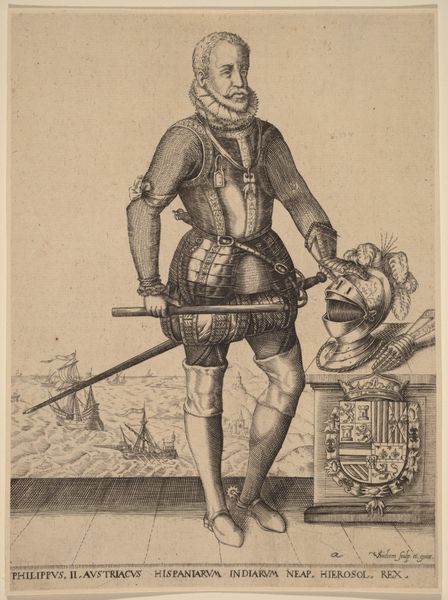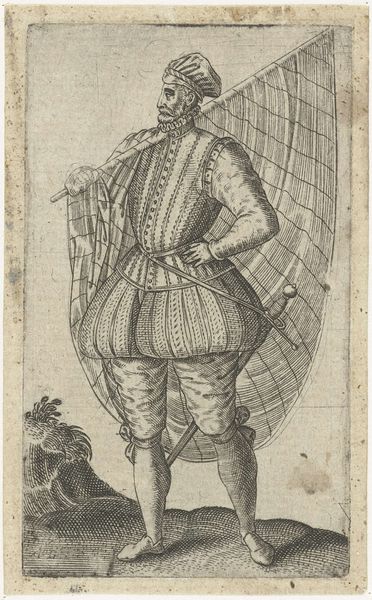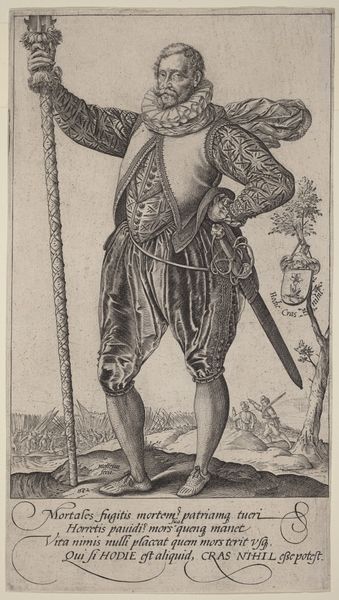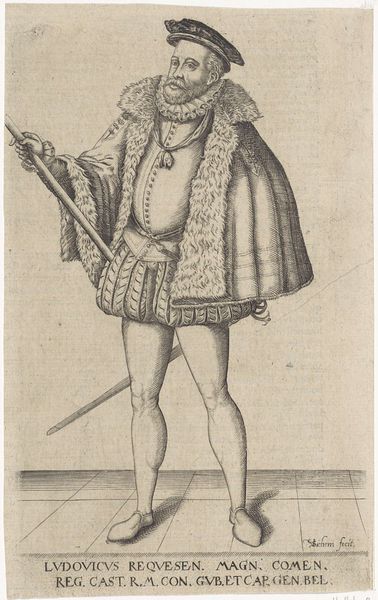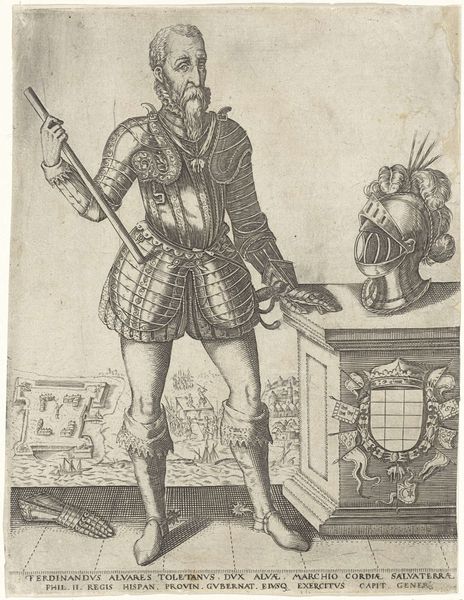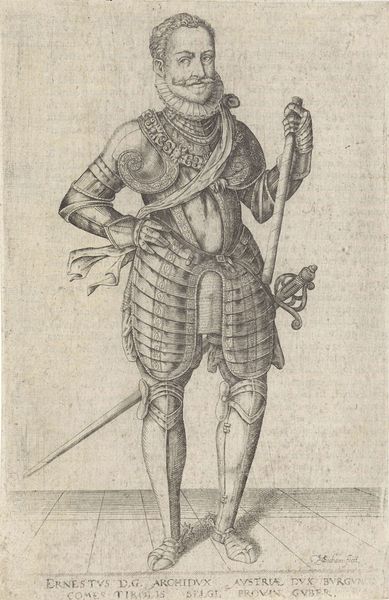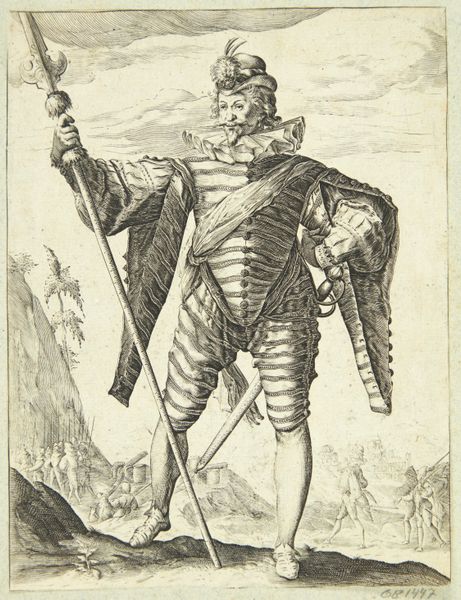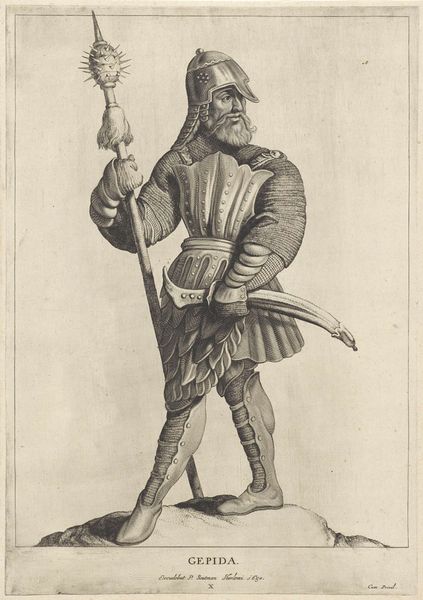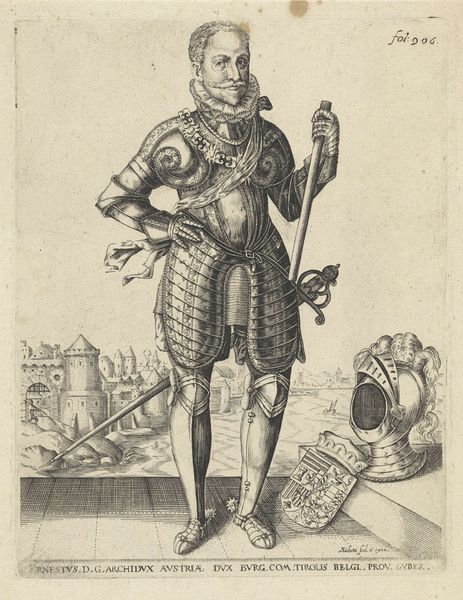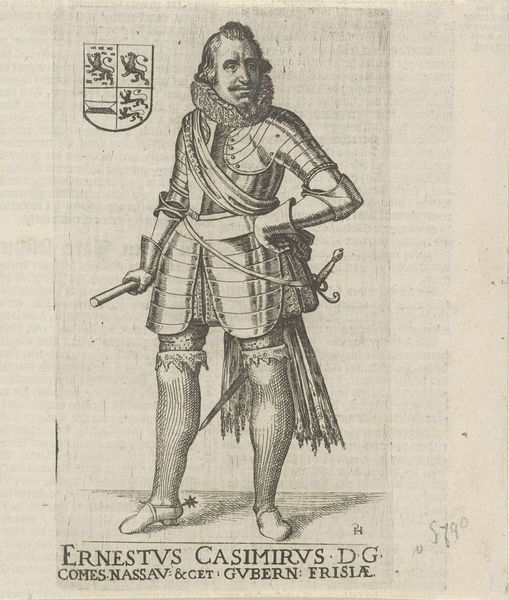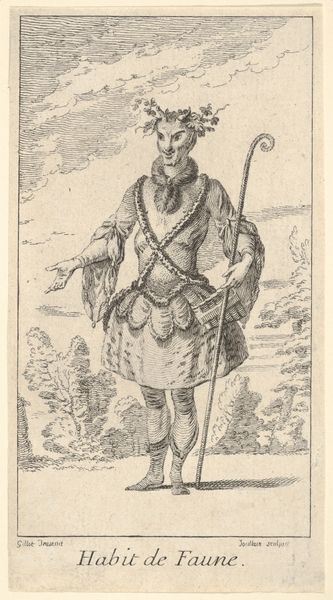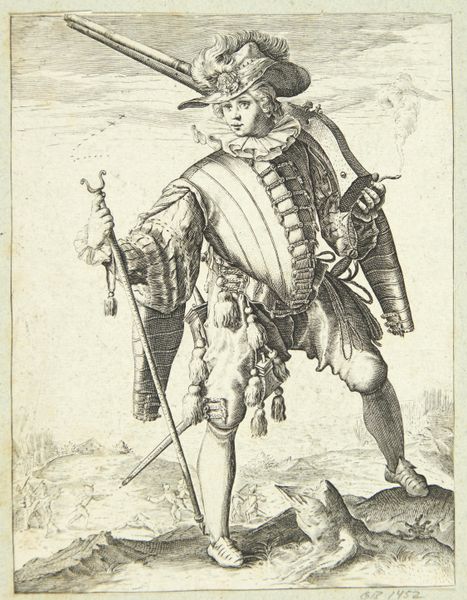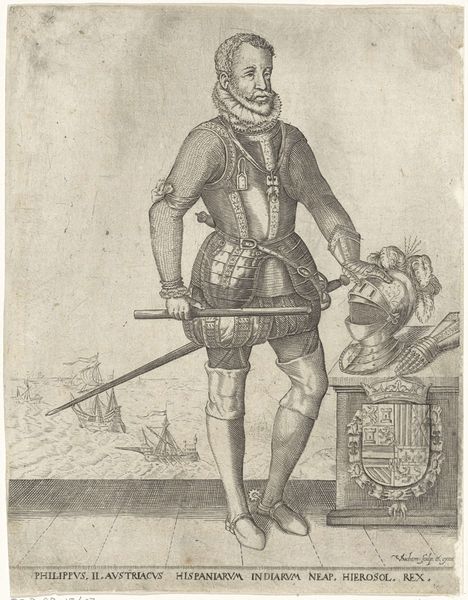
print, engraving
#
portrait
#
baroque
# print
#
portrait drawing
#
history-painting
#
engraving
Dimensions: sheet (trimmed within plate mark): 18.2 x 14.2 cm (7 3/16 x 5 9/16 in.)
Copyright: National Gallery of Art: CC0 1.0
Curator: This is a portrait of Maurice of Nassau, Prince of Orange, by Christoffel van Sichem I. It's an engraving, likely from around the late 16th or early 17th century, during the Baroque period. Editor: It's immediately striking how detailed the armor is. You can practically feel the weight and texture of the metal. And he's quite a figure – imposing. Curator: Absolutely. Consider the socio-political context. Maurice was a key leader in the Dutch Revolt, fighting for independence from Spain. This portrait isn’t just a likeness; it's a carefully constructed image of power and legitimacy. Editor: The means of production must have been meticulous. Each line, each etched detail, speaks to hours of labor. How would the original circulation have looked for a print like this, I wonder? Who was consuming it? Curator: Such images helped solidify his image but also more generally advanced notions of masculine heroism and national identity in a time of upheaval. The presence of the landscape reinforces his connection to the land he defended, and even the coat of arms is loaded with symbolic meaning. Editor: It does invite questions about craftsmanship versus mass production even at this time. There’s an interesting tension between the high-art aspirations and the inherent reproducibility of the medium. Each print allows for dissemination of ideas about power but also shifts the power of reception in complicated ways. Curator: Exactly! And looking at this now through a contemporary lens, we can also consider the implications of portraying military leaders as almost mythical figures and how this construction intersects with our understanding of warfare and nationalism today. How did this contribute to later views and the perpetuation of military heroism, or ideas about noble families? Editor: Thinking materially, this also strikes me that the widespread dispersal of prints allowed not only images to spread widely and democratically, but also promoted and elevated the artisan skills. Curator: The intersectionality of politics, warfare, and the distribution of power really solidifies the importance of reflecting on works like these with both artistic appreciation and historical interrogation. Editor: Indeed, by exploring both its creation and context, this portrait illuminates how power manifests across eras, prompting us to consider both materiality and what kind of cultural legacy endures in our time.
Comments
No comments
Be the first to comment and join the conversation on the ultimate creative platform.
